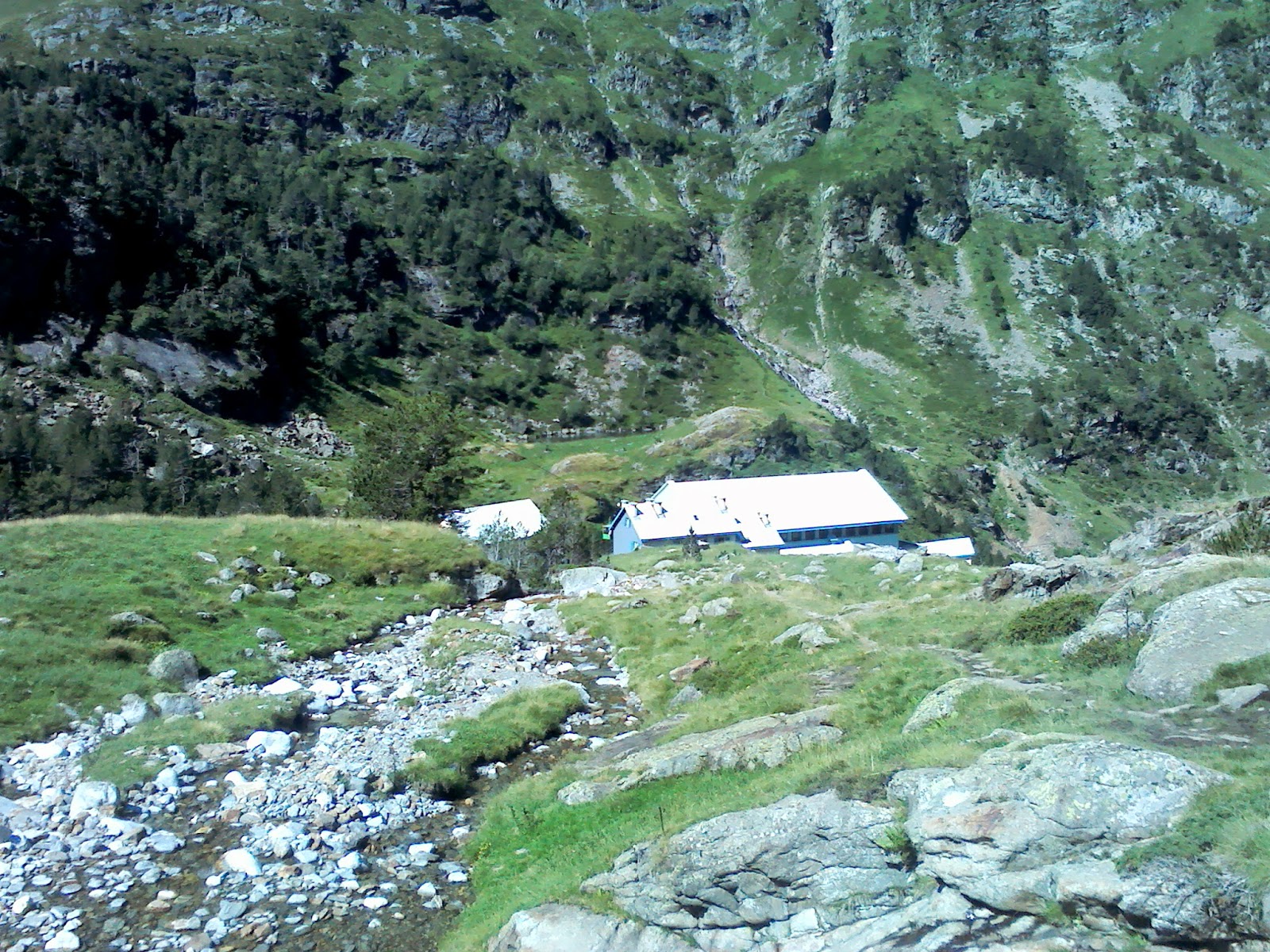DISTANCE: 11km
APPROX TIME: 3 hours
START: Pont du Prat
FINISH: Pont du Prat
This walk to the Refuge de la Soula is one of those walks. Located at the head of the Val Louron - and therefore, along with the previously two Cols which sit either side, one of the definitive walks of this valley - seems on paper like a relatively gentle walk. It will make for a nice Pyrenean valley walk, we thought, but wouldn't be as spectacular as others in the area. We were wrong.
While you can walk it from anywhere in the valley if you want to, I would suggest starting from the Pont du Prat: the bridge at the very head of the valley, next to the hydroelectric station. Because it is outside the national park, hydroelectricity is a prominent feature of this valley, and you will find many aspects of it on this walk as well.
Walk from the bridge and round the right of the hydroelectric station, and you will see a footpath - take it as it enters into the forest ahead of you. From there, you will soon come to a fork in the path - take the right-hand path.
One of the curious things about this walk is the range of information boards placed along the path as you ascend - some tell you about local wildlife, while others inform you about the flora growing in the valley. If your French isn't too shabby they are well worth a read, and a quirky addition to this walk. The first of these is just after the aforementioned fork in the path.
After this, the path takes the form of a series of zigags through the forest. Follow these until you hit another fork in the path.
This fork is quite an important one: our path carries on ahead, up the hillside. The other path, however, takes you down a different valley, the Vallee de la Pez, and is also no doubt a great walk. However, for today continue up through the forest.
The path here once again takes the form of a series of zigzags, but this time they are much longer lassettes, which loop back and forth as you climb higher up the wooded hillside. On your route look out for any further information boards. On your journey up the mountain you will also repeatedly cross the main hydroelectric pipeline; it feels a little strange using wooden bridges to cross water when it's in a pipe, but acts as a constant reminder of the value the mountains and waterways play to the local area far beyond their aesthetic beauty.
Soon you will emerge from the forest, and onto an open craggy outcrop. The path curves back on itself and up the rock face, before levelling off again. It is then that it becomes apparent this is no ordinary valley walk.
 |
| The Gorges de Clarabide |
Look around, and you will see that you are on one side of a gorge: the Gorges de Clarabide, to be precise. Hundreds of feet below you a river hurtles through the bottom of the valley, with a sheer cliff face separating you from that drop. It's a relatively dangerous prospect, but one you cannot help but love: the high, sloping mountains on either side and the forests which drape over their lower reaches makes for a view which is full of Pyrenean splendour. It may well be for this reason alone that you traverse the path round the perimeter of the gorge, but I highly recommend you do.
The path is relatively narrow so take care, but if you stay into the side you should be fine. There are also chains fixed into the cliff wall next to you to act as easy handrails. Follow the gorge round and watch as the views on the other side of the gorge open up, and the head of the valley gets ever closer.
When you reach the head of the valley, it is almost as you expect: you come into a high, Pyrenean pasture, with lush green meadows and high craggy walls; the sort of place you long to be when visiting a high upland area. What makes this valley different is the gorge which you have just left: to your left the river drops suddenly down into the gorge below, and the waterfall this creates is spectacular.
You start up slightly higher than the rest of the valley: head down the hill to meet the bridge which straddles the river, cross it and continue up through the valley.
Within a short walk of the bridge stands your destination: the Refuge de la Soula. Unlike many refuges in the Pyrenees, the Refuge de la Soula appears large, spacious and relatively modern. This perhaps again reflects the importance of the hydroelectric works to this valley: the hydroelectric station sits next door to the refuge.
 |
| Looking down on the refuge from our hidden spot. |
While an important benefit to the surrounding area, some would argue that the hydroelectric station and the larger refuges make for bigger eyesores - for those people I have a fantastic little hidden gem.
 |
| Views of the valley. |
 |
| Our hidden spot on the river. |
Sometimes walks surprise you. Hiking up to the Refuge de la Soula, I thought it might be a standard valley walk. Little did I know that not only would I be walking high up on the side of a gorge as part of that walk, but also that my "destination" was not in fact the refuge, but a little hidden spot on the river I had been following for the whole time. This is one of the best examples of what the Val Louron is all about, and well worth a visit.

No comments:
Post a Comment